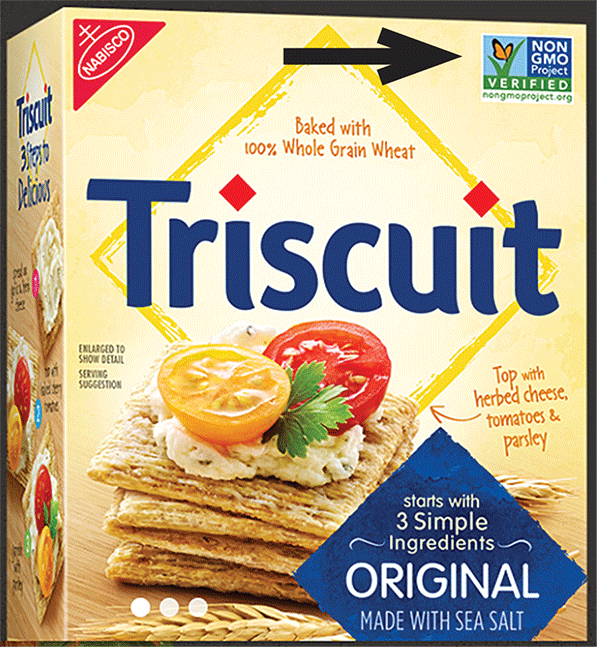
You are doubtless overjoyed that Nabisco, one of the largest processed foods companies on the planet, has made its “entire portfolio of Triscuit crackers Non-GMO Project Verified,” and that the signifying butterfly logo “will be clearly labeled on all packaging.”
This, we are told in a press release and on the triscuit.com website, is because the company is “passionate about crafting delicious crackers that align with consumer preferences.”
The website says, “We know that our customers want ingredient transparency for their snacks. Having Triscuit products verified by the Non-GMO Project is one way we can ensure that.” Translation: Anti-GMO groups have created such a stigma for ingredients from genetically modified crops that companies galore are jumping on the GMO-free bandwagon in an attempt to assuage consumer fears, however baseless, and it’s in our marketing interests to do likewise.
“For over 100 years,” the website proclaims, “Triscuit original crackers have started with 100% whole grain wheat, oil, and salt.” To its credit, it points out that there is no genetically engineered wheat grown commercially, so no worries there. And there is, nowhere on earth, any genetically modified salt (itself an oxymoron).
Which leaves the oil, from either canola or soybeans, for which there are widely-planted genetically engineered varieties — both crops proven in many hundreds of rigorously conducted, peer-reviewed scientific studies to be completely safe for human consumption. Again to its credit, the website notes that the prestigious National Academy of Sciences has determined that “currently marketed foods from GMOs have proven to be safe to eat.”
Which is not to pick on Triscuits — I’ve eaten a few here and there; they’re tasty with a dollop of cream cheese and some pepper jelly, but I’ve never spent a nanosecond worrying about whether the smidgen of cooking oil in a few crackers came from GMO soybeans or canola.
But hey, marketing is marketing, and the fearmongers have convinced a goodly portion of the consuming public that GMO crops are an evil plot by giant agribusiness corporations and biotech-addicted farmers who only want to profit at the expense of consumers’ health. Their PR, alas, has been more effective than agriculture’s PR.
So, we see the irony of companies rushing to pay big bucks to have their products certified GMO-free (even though those products may have no GMO ingredients —certified GMO-free bottled water being perhaps the ultimate oxymoron), and consumers obsessing more over a completely benign ingredient than the potentially greater adverse health effects from long-term consumption of overly sweet or salty highly processed foods.
As my old granny was wont to somewhat contemptuously observe, “Some people just don’t have enough to worry about.”
No word as to whether Nabisco will follow suit with its Oreo brand cookies, the top selling cookie in the U.S. One can imagine they are not exactly thrilled with websites such as the one that warns of “many dangerous ingredients…in America’s No. 1 GMO cookie,” and cites a one-off, non-peer reviewed study by a group of college students that “eating Oreos activated more neurons in the lab rat’s brain pleasure center than being exposed to…highly addictive and dangerous” cocaine and morphine.
Hmmm. I’ve never tried cocaine or morphine, but I can attest that after our granddaughters got old enough to stop getting off the school bus at our house each day, I never had a minute’s problem giving up the occasional Oreos I shared with them as part of their after-school snacks.
About the Author(s)
You May Also Like




